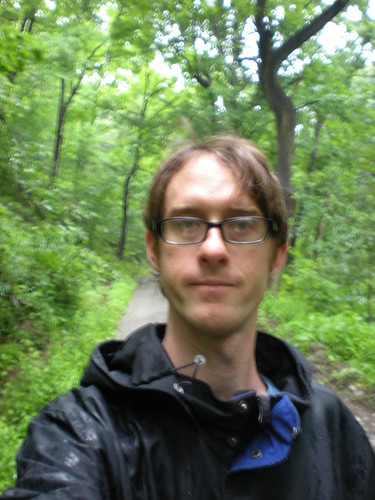

Water that falls on our construction materials, our parks, our rooftops, our gardens, our cars... it all eventually makes its way either to a river, or back into the air to fall somewhere else.
Yesterday (June 9th) I went to explore Schenley Park in the rain. See more:

I got quite soggy, and also watched water on its way to the ocean.

pouring off bridges...

leaking out of overwhelmed storm drains...

passing through a rain garden where some hopefully soaks in and is filtered and released during a drier time into the creek...

... pausing in Panther Hollow Lake before it makes its way underground, through the sewer system, into the river.
In nature, things slow down the water on its path to the ocean, and it is used by the ecosystem, rather than just washing away. Plant roots, leaf litter, permeable soil, beavers, wetlands, numerous ecosystem components 'slow down' water before it runs off. In the city, where many of these factors are absent or reduced in scope, water just rushes away, causing floods and not sticking around during droughts. There are, however, many ways to slow down water and keep it around in the city for longer, and reduce flooding, as is detailed in other parts of this blog.

No comments:
Post a Comment